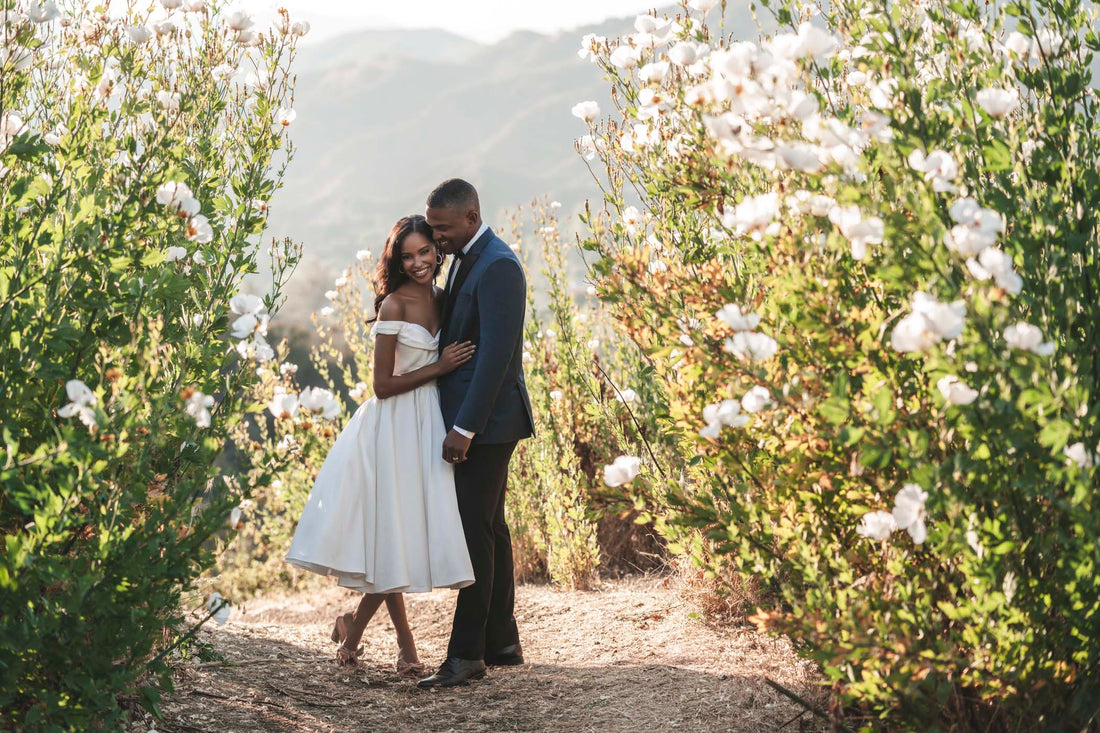
The Evolution of Wedding Gown Styles Through the Years
Apr 17th, 2024Wedding gowns, with their ethereal elegance and timeless beauty, have long been the focal point of a bride's ensemble. Across different eras and cultures, wedding gown styles have evolved, reflecting changes in fashion, culture, and societal norms. From elaborate and ornate designs to minimalist and sleek silhouettes, the evolution of wedding gown styles is a captivating journey through history.

The Victorian Era: Opulence and Grandeur
During the Victorian era (1837-1901), wedding gowns were characterized by opulence and grandeur. Queen Victoria's iconic white wedding gown, adorned with lace and silk, set the trend for brides to wear white, symbolizing purity and innocence. Dresses were often voluminous with layers of fabric, featuring high necklines and long sleeves. The emphasis was on modesty and extravagance, with intricate detailing and embellishments.
The Roaring Twenties: Flappers and Art Deco Elegance
In the 1920s, wedding gown styles underwent a dramatic shift influenced by the Jazz Age and the rise of the flapper culture. Dresses became more streamlined, reflecting the newfound freedom and liberation of women. Shorter hemlines, dropped waists, and sleeveless designs became popular, echoing the glamorous aesthetic of the era. Art Deco motifs, such as geometric patterns and beaded embellishments, added a touch of elegance to wedding gowns of the time.
The Post-War Era: Elegance and Romance
Following World War II, wedding gown styles embraced a return to elegance and romance. Brides sought to escape the austerity of wartime and embrace a sense of luxury and celebration. Princess-style gowns with full skirts and fitted bodices became fashionable, epitomizing the fairy-tale romance that many brides dreamed of. Fabrics like satin and tulle were favored for their luxurious feel, while lace detailing and floral motifs added a romantic touch to wedding gowns.
 The Swinging Sixties: Mod and Mini
The Swinging Sixties: Mod and Mini
The 1960s ushered in an era of change and innovation in wedding gown styles. Inspired by the mod fashion movement, brides embraced shorter hemlines and sleek, minimalist silhouettes. Shift dresses and A-line skirts were popular choices, reflecting the youthful and carefree spirit of the decade. Bridal fashion icon, Audrey Hepburn, epitomized the chic and understated elegance of 1960s wedding gowns with her iconic Givenchy designs.
The Bohemian Seventies: Free-Spirited and Hippie-Inspired
In the 1970s, wedding gown styles took on a free-spirited and bohemian aesthetic, influenced by the hippie movement and counterculture. Brides embraced flowing fabrics, loose silhouettes, and floral embellishments, reflecting a desire for simplicity and natural beauty. Crochet lace, bell sleeves, and flower crowns became hallmark features of 1970s wedding gowns, symbolizing a rejection of traditional norms and a celebration of individuality.
The Modern Era: Diversity and Personalization
In the modern era, wedding gown styles have become more diverse and personalized than ever before. Brides have a myriad of options to choose from, ranging from classic ball gowns to sleek sheath dresses and everything in between. Designers experiment with unconventional fabrics, bold colors, and innovative silhouettes, pushing the boundaries of traditional bridal fashion.
From vintage-inspired designs to contemporary couture, the evolution of wedding gown styles reflects the ever-changing tastes and trends of society. While fashion may evolve, the sentiment behind the wedding gown remains unchanged – a symbol of love, commitment, and the beginning of a new chapter in life. As brides continue to embrace individuality and self-expression, the future of wedding gown styles promises to be as diverse and enchanting as ever.


